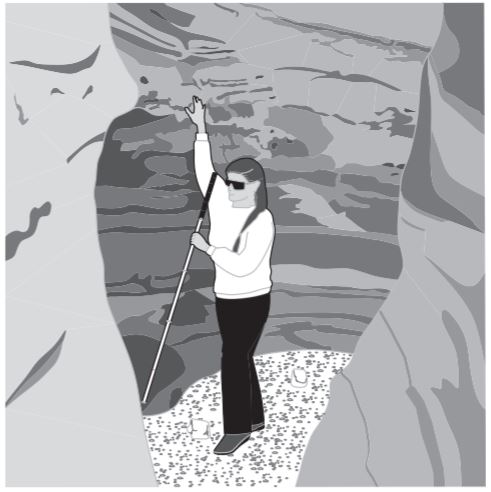Outdoor Developed Areas: A Summary of Accessibility Standards for Federal Outdoor Developed Areas
Protruding Objects [1017.9]
Figure 10—Protruding object requirements do not apply to natural features such as caves in undeveloped areas.
Objects that protrude into the trail clear tread width, passing spaces, and resting intervals can pose hazards to people who are blind or have low vision. Constructed elements on trails, resting intervals, and passing spaces must comply with the technical requirements for protruding objects in section 307 of the ABA Standards. Signs and other post-mounted objects are examples of constructed elements that, if located incorrectly, can be protruding objects.
The technical requirements for protruding objects do not apply to natural features, such as tree branches, rock formations, and trails that pass beneath rock ledges or through caves because these are not constructed elements (figure 10). Clearing limits for trail construction and maintenance usually require that brush, limbs, trees, and logs be cut back a foot or more from the edge of the trail. However, trail maintenance cycles may be several years for some trails, and vegetation may encroach on the trail in the interim between cycles. While it may not always be possible to control vegetation, it is always possible to place constructed features where they won’t pose a hazard to hikers who are blind or have low vision.


User Comments/Questions
Add Comment/Question